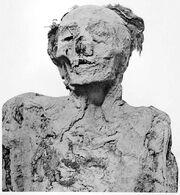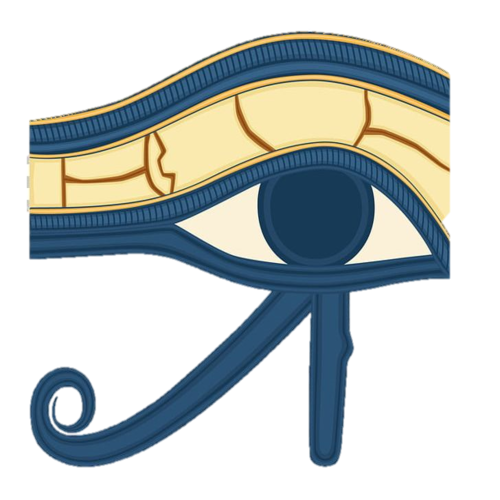| Ahmose-Henuttamehu | ||||||||
|---|---|---|---|---|---|---|---|---|
"Born of the Moon, Mistress of Lower Egypt" | ||||||||
 Coffin of Ahmose-Henuttamehu found in TT320 (Smith 1912). | ||||||||
| Dynasty | 17th and 18th Dynasty | |||||||
| Pharaoh(s) | Tao II – Ahmose II | |||||||
| Titles | King's Great Wife King's Wife King's Daughter King's Sister | |||||||
| Father | Tao II | |||||||
| Mother | Ahmose-Inhapi | |||||||
| Spouse(s) | Ahmose II | |||||||
| Burial | TT320 (reburied) | |||||||
- For other pages by this name, see Ahmose.
Ahmose-Henuttamehu (Ancient Egyptian: ỉꜥḥ-ms ḥnw.t-tꜣ-mḥw, "Born of the Moon, Mistress of Lower Egypt") or simply Henuttamehu was an ancient Egyptian Princess and Queen of the Seventeenth and Eighteenth Dynasty during the transition from the Second Intermediate Period to the New Kingdom.
Titles[]
Henuttamehu is known to have held the title King's Daughter (sꜣt-nsw), King's Sister (snt-nsw) and King's Wife (ḥmt-nsw) and King's Great Wife (ḥmt-nsw-wrt).[1][2]
Family[]
Henuttamehu was a daughter of Pharaoh Tao II by his sister-wife Ahmose-Inhapi. She was probably married to her half-brother Pharaoh Ahmose II. Henuttamehu was a half-sister to the King's Great Wife and God's Wife of Amun Ahmose-Nefertari and Pharaoh Kamose.
Attestations[]
Not much is known about the life of Henuttamehu. She is depicted in the TT2 tomb of Khabekhnet in Thebes, where a list of royal ancestors is shown being worshipped in the Nineteenth Dynasty. The scene is now in the Berlin Museum (1625).
Burial[]
Henuttamehu's original tomb remains unknown. She was later reburied in the royal cache at Deir el-Bahari, where her mummy was discovered in 1881. Henuttamehu's mummy was reburied there along with those of other royalty after Year 11 of Pharaoh Shoshenq I. She was probably buried together with her mother, Ahmose-Inhapy.
Mummy[]

Mummy of Ahmose-Henuttamehu found in TT320 (Smith 1912).
Ahmose-Henuttamehu's mummy was discovered in her own coffin and is now in the Egyptian Museum in Cairo. It was examined by Gaston Maspero in December 1882. Henuttamehu was an old woman when she died, with worn teeth.[3] Quotes from the Book of the Dead were written on her mummy bandages.
References[]
Bibliography[]
- Dodson, A./Hilton, D., 2004: The Complete Royal Families of Ancient Egypt. Thames & Hudson, London.
- Grajetzki, W., 2005: Ancient Egyptian Queens: A Hieroglyphic Dictionary. Golden House Publications, London.
- Smith, G.E., 1912: The Royal Mummies: Catalogue Général des Antiquités Égyptiennes du Musée de Caire. Duckworth (Reprinted year 2000 version).
